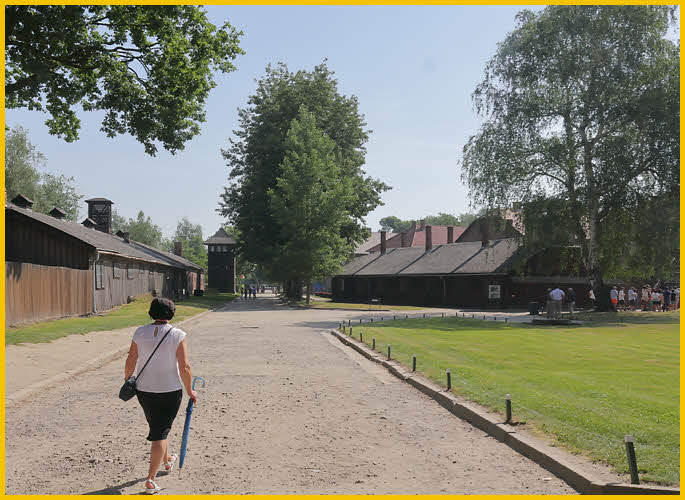Poland
Entering Auschwitz I
 |
All over the world, Auschwitz has become a symbol of terror, genocide, and the Holocaust. It was established by Germans in 1940, in the suburbs of Oswiecim, a Polish city that was annexed to the Third Reich by the Nazis. Its name was changed to Auschwitz. which also became the name of Auschwitz Concentration Camp.
The direct reason for the establishment of the camp was the fact that mass arrests of Poles were increasing beyond the capacity of existing "local" prisons. The first transport of Poles reached Auschwitz from Tarnów prison on June 14, 1940. Initially, Auschwitz was to be one more concentration camp of the type that the Nazis had been setting up since the early 1930s. It functioned in this role throughout its existence, even when, beginning in 1942, it also became the largest of the death camps.
The first and oldest was the so-called "main camp," later also known as "Auschwitz I" (the number of prisoners fluctuated around 15,000, sometimes rising above 20,000), which was established on the grounds and in the buildings of prewar Polish barracks;
The second part was the Birkenau camp (which held over 90,000 prisoners in 1944), also known as "Auschwitz II" This was the largest part of the Auschwitz complex. The Nazis began building it in 1941 on the site of the village of Brzezinka, three kilometers from Oswiecim. The Polish civilian population was evicted and their houses confiscated and demolished. The greater part of the apparatus of mass extermination was built in Birkenau and the majority of the victims were murdered here;
More than 40 sub-camps, exploiting the prisoners as slave laborers, were founded, mainly at various sorts of German industrial plants and farms, between 1942 and 1944.
The Germans isolated all the camps and sub-camps from the outside world and surrounded them with barbed wire fencing. All contact with the outside world was forbidden. However, the area administered by the commandant and patrolled by the SS camp garrison went beyond the grounds enclosed by barbed wire. It included an additional area of approximately 40 square kilometers (the so-called "Interessengebiet" - the interest zone), which lay around the Auschwitz I and Auschwitz II-Birkenau camps.
The local population, the Poles and Jews living near the newly-founded camp, were evicted in 1940-1941. Approximately one thousand of their homes were demolished. Other buildings were assigned to officers and non-commissioned officers from the camp SS garrison, who sometimes came here with their whole families. The pre-war industrial facilities in the zone, taken over by Germans, were expanded in some cases and, in others, demolished to make way for new plants associated with the military requirements of the Third Reich. The camp administration used the zone around the camp for auxiliary camp technical support, workshops, storage, offices, and barracks for the SS.
